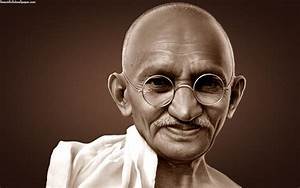The Role of Gandhi in India’s Independence Movement

Episode 28 Mahatma Gandhi
A History of India
Michael Fisher (2016)
Film Review
Gandhi was born 1869 in Porbander, a small kingdom of 70,000 in Gujarat that came under indirect British rule during his father’s lifetime.* Born into the Vaishya varna, Ghandi was descended from three generations of Gujarati prime ministers. Historically his family were grocers (the meaning of the name Gandhi).
After entering into an arranged marriage at 13, Gandhi had his first son (who died) at 16. After having two more sons, he left his family at 18 to study in the UK. In addition to qualifying as a barrister, he also studied dancing, violin and French to increase his acceptance in British society. He also concealed hi marriage in order to meet British women.
Returning to India at 21, he had to abandon his law practice when he couldn’t attract any clients. At 24, he again left his family to join the Indian diaspora in South Africa. At the time, South Africa consisted of the Dutch colonies of Transvaal and the Orange Free State and the British colonies of Cape Colony and Natal. Gandhi would spend the next 20 years in Natal, the capitol of Durban.
Following the abolition of slavery, Natal replaced their slaves with Indian indentured servants. When Gandhi arrived, there were 40,000 Indians in Natal, which was roughly equal to the white population.
After the British government arbitrarily increased the term of indenture from five to ten years, as well as adding a special tax on Indian immigrants, Gandhi organized a successful campaign to repeal the tax. Forming the Natal Indian Congress, he went to lead nonviolent protests against the first anti-Apartheid laws. As he and his supporters filled up the jails, the British authorities had no choice but to start releasing them.
He returned to India at age 46. One of the first campaigns he engaged in was in Chamaran in Behar to support striking indigo farmers. Following his arrest, Gandhi used his own trial to force the police spies who were surveilling him to testify.
He subsequently went to Ahmedabad to support textile workers striking against Indian factory owners.** During a a plague outbreak, they increased wages due to a shortage of workers and then decreased them after the epidemic passed. Gandhi used his first hunger strike (threatening to fast until death) to force the factory owners to restore the wage cut. This led to the formation of one of India’s first labor unions.
Gandhi openly oppose militant nationalist groups who used assassinations and bombings to pressure Britain to grant India independence. Asserting that Indians weren’t morally ready for independence, he called off a national strike when militants burned down a police station with the British officers inside.
Despite reaching out to untouchables, he was unsuccessful in enlisting them in his Quit India movement because he opposed the special constituencies they sought (where only untouchables could run for office or vote). He was equally unsuccessful in recruiting Muslims to his independence movement (despite his ultimate assassination by a Hindu nationalist for being too sympathetic to Muslims).
*Britain had granted nominal sovereignty to all the princely states that didn’t rebel in 1857. See India’s 1857 Peoples Rebellion
**India’s textile industry was in the process of being killed off by cheap textile imports from Britain.
Film can be viewed free with a library card on Kanopy.
The Most Revolutionary Act
- Stuart Jeanne Bramhall's profile
- 11 followers



